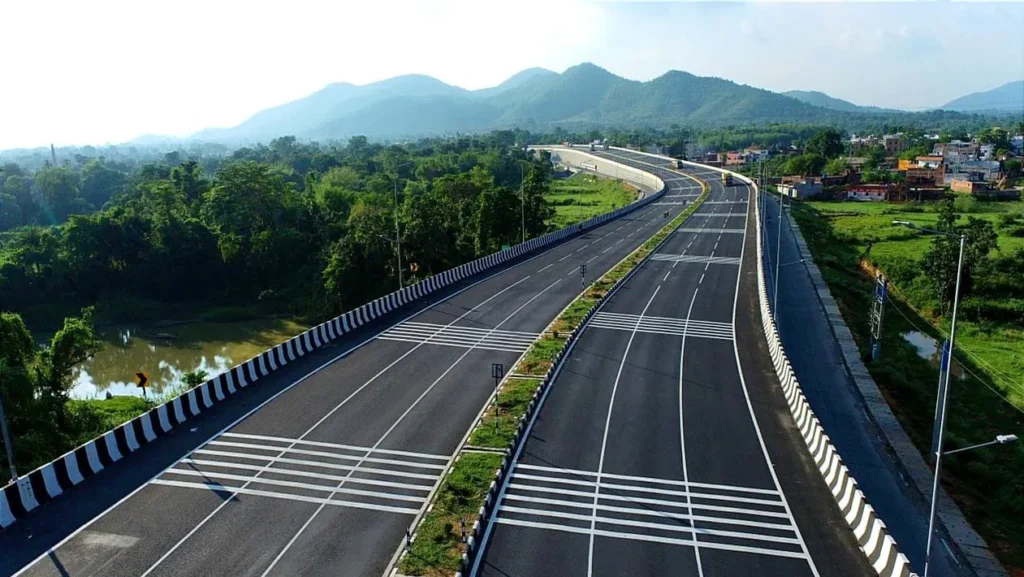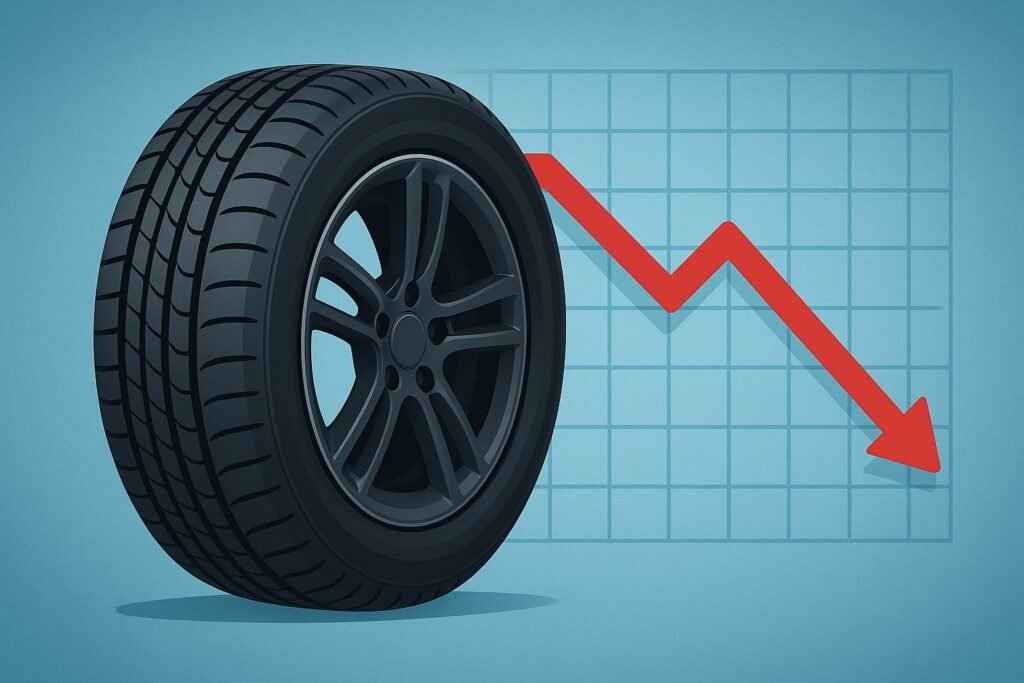The GST rate cut on tyres from 28% to 18%, effective from September 22, 2025, marks a significant policy shift that will bring substantial relief to millions of vehicle owners, logistics operators, and the broader transportation ecosystem. The Automotive Tyre Manufacturers’ Association (ATMA) has welcomed this long-awaited decision, emphasizing its positive impact on affordability, road safety, and overall economic efficiency.
Also Read: Maruti Suzuki Victoris Breaks Cover- Game-Changing Midsize SUV with Level 2 ADAS

GST Rate Cut on Tyres: Comprehensive Impact Across All Vehicle Segments
The GST rate cut on tyres represents a 10 percentage point reduction that will cascade benefits across the entire mobility spectrum. This substantial tax relief addresses a long-standing industry concern about tyres being classified in the highest tax bracket alongside luxury and demerit goods, despite being an essential component for transportation, agriculture, and logistics operations.
ATMA Chairman Arun Mammen highlighted the broader economic implications, stating that “lower GST on tyres will translate into more affordable mobility for millions of users – from farmers and small traders to transporters, motorists, and logistics operators.”
Also Read: GST Rate Cuts for Cars – Small Cars Drop to 18%, Big Cars to 40% – Full Details & Price Impact

GST Rate Cut Impact Across Vehicle Categories
| Vehicle Segment | Tyre Usage | Beneficiaries | Cost Reduction Impact |
|---|---|---|---|
| Commercial Vehicles | Trucks, Buses | Logistics companies, transporters | Significant operating cost savings |
| Passenger Vehicles | Cars, SUVs | Individual motorists, taxi operators | Lower replacement costs |
| Two & Three Wheelers | Motorcycles, Scooters, Autos | Daily commuters, delivery services | Enhanced affordability |
| Agricultural Equipment | Tractors, Farm machinery | Farmers, agricultural contractors | Reduced farming costs |
| Construction & Mining | Heavy equipment | Construction companies, miners | Lower operational expenses |
Also Read: E20 Fuel Impact on Skoda Cars – Compatibility, Warranty, and Essential Care

Economic Benefits
The GST rate cut on tyres will create a ripple effect throughout the economy by reducing one of the fundamental costs associated with vehicle operation. The benefits extend far beyond individual consumers:
Direct Cost Savings
- Immediate Price Relief: Tyre prices will drop by approximately 10%, making replacements more affordable
- Reduced Operating Costs: Fleet operators and commercial vehicle owners will see significant savings in maintenance expenses
- Lower Logistics Costs: Transportation and delivery services will benefit from reduced operational overheads
Economic Multiplier Effect
- Enhanced Competitiveness: Indian logistics sector becomes more cost-effective
- Agricultural Support: Farmers benefit from lower tractor and farm equipment tyre costs
- Small Business Relief: Local transporters and small fleet operators gain competitive advantage
Road Safety Enhancement Through Affordable Tyre Replacement
One of the most significant long-term benefits of the GST rate cut on tyres relates to road safety improvement. ATMA has consistently argued that high tyre prices often discourage timely replacement, leading to dangerous situations on Indian roads.
Safety Benefits:
- Timely Replacement Encouraged: Lower costs make it financially viable to replace worn tyres promptly
- Reduced Accident Risk: Well-maintained tyres significantly improve vehicle stability and braking performance
- Better Maintenance Culture: Affordable replacement costs encourage proactive maintenance rather than reactive repairs
ATMA emphasized that “high prices often discourage vehicle owners from timely tyre replacement, leading to extended use of worn-out tyres, which is a known risk factor for accidents.”
Industry Response
The tyre manufacturing industry has unanimously welcomed the GST rate cut on tyres, viewing it as recognition of tyres’ essential nature rather than luxury classification. The previous 28% GST rate placed tyres in the same category as luxury goods and demerit items, which industry experts argued was inappropriate for a critical safety component.
Manufacturing Sector Benefits:
- Increased Demand: Lower prices are expected to boost tyre sales across all segments
- Volume Growth: Enhanced affordability could expand the addressable market
- Investment Confidence: Policy support encourages further industry investment
- Export Competitiveness: Domestic cost advantages may improve export prospects
Consumer Impact and Market Dynamics
The GST rate cut on tyres will have immediate and measurable impact on consumer behavior and market dynamics:
Individual Vehicle Owners:
- Passenger Car Owners: Savings of ₹1,000-3,000 per set depending on tyre quality and brand
- Two-Wheeler Users: Reduced replacement costs for motorcycles and scooters
- Commercial Vehicle Operators: Substantial savings on heavy-duty tyres
Fleet Operators:
- Taxi and Cab Services: Lower operating costs improving profitability margins
- Delivery Services: Reduced logistics overhead for e-commerce and food delivery
- Public Transportation: Bus operators benefit from reduced maintenance costs
Long-term Economic and Social Benefits
Beyond immediate cost savings, the GST rate cut on tyres supports broader economic and social objectives:
Economic Growth:
- Reduced Transportation Costs: Lower logistics expenses benefit entire supply chain
- Improved Productivity: Better maintained vehicles operate more efficiently
- Employment Generation: Increased tyre demand may create manufacturing jobs
Social Impact:
- Rural Development: Farmers and rural transporters gain from reduced costs
- Road Safety: Better maintained vehicles contribute to safer roads
- Accessibility: Lower vehicle operating costs improve mobility access
Also Read: EV Car Sales August 2025: Record 17,298 Units Sold with 155% YoY Growth
Conclusion
The GST rate cut on tyres represents a well-timed policy intervention that addresses multiple economic and safety concerns simultaneously. By reducing the tax burden from 28% to 18%, the government has recognized tyres as essential components rather than luxury items, aligning taxation with practical reality. This decision will benefit millions of vehicle owners, improve road safety through encouraging timely maintenance, and contribute to overall economic efficiency by reducing logistics and transportation costs. As ATMA noted, this move will provide “much-needed relief to consumers and industry alike,” demonstrating the positive impact of thoughtful tax policy on essential goods and services.

